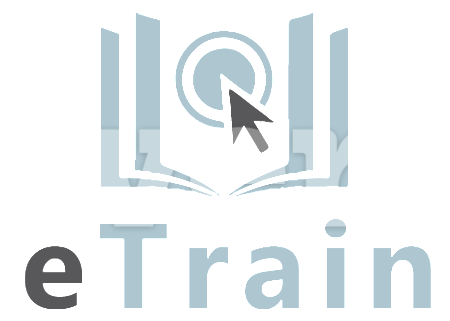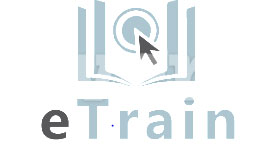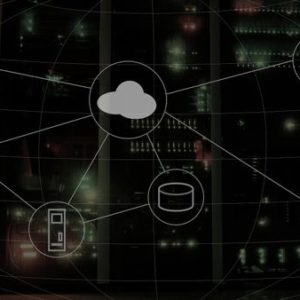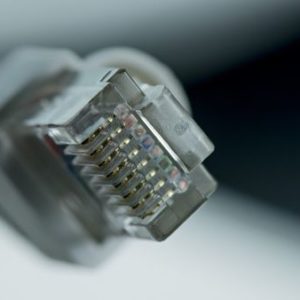Description
The CompTIA IT Fundamentals Certification is an entry level certification designed to introduce users to basic computer principles. It covers basic IT literacy and ensures one understands the different terminology and the various concepts involved In the IT industry. It also serves as a great starting point if you are just getting started in computers and is designed to be the first step on your way to pursuing the CompTIA A+ certification or others similar. Topics covered include hardware basics, troubleshooting, software installation, security and also networking.
- Support operating systems.
- Install, configure, and maintain operating systems.
- Maintain and troubleshoot Microsoft Windows.
- Configure and troubleshoot network connections.
- Manage users, workstations, and shared resources.
- Implement client virtualization.
- Recognize the main components of a PC as well as storage media such as USB drives and DVD.
- Start the computer and navigate the operating system desktop.
- Use Windows Explorer to create directories and subdirectories and manage files.
- Use a web browser to view websites.
- who has basic computer skills
- who desires to obtain a job as an entry-level IT technician.
|
|
Overview |
|
Common Operating Systems |
|
Common Operating Systems Part 2 |
|
Common Operating Systems Part 3 |
|
Common Operating Systems Part 4 |
|
Troubleshooting Methodology |
|
Windows Features and Tools |
|
Windows Features and Tools Part 2 |
|
Windows Features and Tools Part 3 |
|
Windows Features and Tools Part 4 |
|
Manage Files in Windows |
|
Manage Files in Windows Part 2 |
|
Manage Files in Windows Part 3 |
|
Manage Files in Windows Part 4 |
|
Manage Disks in Windows |
|
Manage Disks in Windows Part 2 |
|
Manage Disks in Windows Part 3 |
|
Manage Disks in Windows Part 4 |
|
Manage Disks in Windows Part 5 |
|
Manage Devices in Windows |
|
Manage Devices in Windows Part 2 |
|
Manage Devices in Windows Part 3 |
|
Manage Devices in Windows Part 4 |
|
Manage Devices in Windows Part 5 |
|
|
Common Connection Interfaces |
|
Safety Procedures |
|
Common Connection Interfaces Part 2 |
|
Safety Procedures Part 2 |
|
Common Connection Interfaces Part 3 |
|
PC Components |
|
Common Connection Interfaces Part 4 |
|
PC Components Part 2 |
|
PC Components Part 3 |
|
Peripheral Device Types |
|
Peripheral Device Types Part 2 |
|
PC Components Part 4 |
|
PC Components Part 5 |
|
PC Components_ Motherboard Form Factors |
|
PC Components: Expansion Slots |
|
|
Display Device: Connections |
|
Display Device: Connections Part 2 |
|
Display Devices: Characteristics |
|
Display Devices: Resolution |
|
Troubleshooting Display Devices |
|
Multimedia Devices |
|
|
Install System Memory |
|
Install System Memory Part 2 |
|
Install System Memory Part 3 |
|
Mass Storage Devices: Optical Drives |
|
Mass Storage Devices: Optical Drives Part 2 |
|
Mass Storage Devices: Flash Storage |
|
Mass Storage Devices: HDDs and SSDs |
|
Mass Storage Devices: HDDs and SSDs Part 2 |
|
Mass Storage Devices: RAID |
|
Mass Storage Devices: RAID Part 2 |
|
Removable Storage Devices |
|
Troubleshooting Storage Devices |
|
|
Configure and Upgrade BIOS UEFI |
|
Configure and Upgrade BIOS UEFI Part 2 |
|
Power Supplies |
|
Troubleshoot Internal System Components |
|
Custom PCs |
|
Custom PCs Part 2 |
|
|
Configure and Use Linux |
|
Configure and Use Linux Part 2 |
|
Configure and Use macOS |
|
Configure and Use macOS Part 2 |
|
Configure and Use macOS Part 3 |
|
Configure and Use macOS Part 4 |
|
Install and Upgrade Operating Systems |
|
Install and Upgrade Operating Systems Part 2 |
|
Install and Upgrade Operating Systems Part 3 |
|
Maintain Operating Systems |
|
Maintain Operating Systems Part 2 |
|
Maintain Operating Systems Part 3 |
|
|
Install and Manage Windows Applications |
|
Install and Manage Windows Applications Pt2 |
|
Install and Manage Windows Applications Pt3 |
|
Install and Manage Windows Applications Pt4 |
|
Manage Windows Performance |
|
Manage Windows Performance Part 2 |
|
Manage Windows Performance Part 3 |
|
Troubleshoot Windows |
|
Troubleshoot Windows Part 2 |
|
Troubleshoot Windows Part 3 |
|
Troubleshoot Windows Part 4 |
|
|
Wired Networks |
|
Wired Networks Part 2 |
|
Wired Networks Part 3 |
|
Wired Networks Part 4 |
|
Wired Networks Part 5 |
|
Network Hardware Devices |
|
Network Hardware Devices Part 2 |
|
Network Hardware Devices Part 3 |
|
Wireless Networks |
|
Wireless Networks Part 2 |
|
Wireless Networks Part 3 |
|
Wireless Networks Part 4 |
|
Internet Connections Types |
|
Internet Connection Types Part 2 |
|
Internet Connection Types Part 3 |
|
Network Configuration: OSI And TCP/IP |
|
Network Configuration: OSI and TCP/IP Pt.2 |
|
Network Configuration: Routers |
|
Network Configuration: IPv4 Addressing |
|
Network Configuration: IPv4 Addressing Pt.2 |
|
Network Configuration: IPv6 |
|
Network Configuration: Host Configuration |
|
Network Configuration: Host Configuration Part 2 |
|
Network Configuration: IP Address Format |
|
Network Configuration: IP Address Format Pt.2 |
|
Network Configuration: Network Services |
|
Network Configuration: Network Services Part 2 |
|
Network Configuration: Network Services Pt.3 |
|
Network Configuration: Network Services Pt.4 |
|
|
Network Connection Settings |
|
Network Connection Settings Part 2 |
|
Install and Configure SOHO Networks |
|
Configure SOHO Network Security |
|
Configure SOHO Network Security Part 2 |
|
Configure Remote Access |
|
Configure Remote Access Part 2 |
|
Troubleshooting Network Connections |
|
Troubleshooting Network Connections Part 2 |
|
Troubleshooting Network Connections Part 3 |
|
Troubleshooting Network Conneciton Part 4 |
|
Install and Configure IoT Devices |
|
|
Manage Users |
|
Manage Users Part 2 |
|
Manage Users Part 3 |
|
Shared Resources: Shares and Printer Sharing |
|
Shared Resources: Shares and Printer Sharing Pt2 |
|
Shared Resources: Network and Sharing Center |
|
Shared Resources: Workgroups and HomeGroups |
|
Shared Resources: NTFS Permissions |
|
Shared Resources: NTFS Permissions Part 2 |
|
Shared Resources: NTFS Permissions Part 3 |
|
Shared Resources: NTFS Permissions Part 4 |
|
Configure Active Directory Accounts and Policies |
|
Configure Active Directory Accounts, Policies Pt 2 |
|
Configure Active Directory Accounts, Policies Pt 3 |
|
Configure Active Directory Accounts, Policies Pt 4 |
|
|
Configure Client-side Virtualization |
|
Configure Client-side Virtualization Part 2 |
|
Configure Client-side Virtualization Part 3 |
|
Cloud Computing Concepts |
|
Cloud Computing Concepts Part 2 |
|
|
Logical Security Concepts |
|
Logical Security Concepts Part 2 |
|
Logical Security Concepts Part 3 |
|
Logical Security Concepts Part 4 |
|
Physical Security |
|
Threats And Vulnerabilities |
|
Threats and Vulnerabilities Part 2 |
|
|
Implement Security Best Practices |
|
Implement Security Best Practices Part 2 |
|
Implement Data Protection Policies |
|
Implement Data Protection Policies Part 2 |
|
Protect Data During Incident Response |
|
|
Detect, Remove and Prevent Malware |
|
Detect, Remove and Prevent Malware Part 2 |
|
Detect, Remove and Prevent Malware Part 3 |
|
Workstation Security Issues |
|
Workstation Security Issues Part 2 |
|
Workstation Security Issues Part 3 |
|
|
Use Laptop Features |
|
Install and Configure Laptop Hardware |
|
Install and Configure Laptop Hardware Pt.2 |
|
Troubleshoot Common Laptop Issues |
|
|
Mobile Device Types |
|
Mobile Device Types Part 2 |
|
Mobile Device Types Part 3 |
|
Mobile Device Accessories |
|
Mobile Device Accessories Part 2 |
|
Configure Mobile Device Network Connectivity |
|
Configure Mobile Device Network Connectivity Pt2 |
|
Supporting Mobile Apps |
|
Securing Mobile Devices |
|
Mobile Device Issues: Applications |
|
Mobile Device Issues: OS and App Security |
|
Mobile Device Issues: Operating Systems |
|
|
Printers |
|
Printers Part 2 |
|
Maintain Laser Printers |
|
Maintain Laser Printers Part 2 |
|
Maintain Inkjet Printers |
|
Maintain Impact, Thermal and 3D Printers |
|
Maintain Impact, Thermal and 3D Printers Pt.2 |
|
Install and Configure Printers |
|
Install and Configure Printers Part 2 |
|
Install and Configure Printers Part 3 |
|
Install and Configure Printers Part 4 |
|
Troubleshoot Print Device Issues |
|
Troubleshooting Print Device Issues Part 2 |
|
Troubleshoot Print Device Issues Part 3 |
|
Install and Configure Imaging Devices |
|
|
Environmental Impacts and Controls |
|
Environmental Impacts and Controls Part 2 |
|
Environmental Impacts and Controls Part 3 |
|
Environmental Impacts and Controls Part 4 |
|
Create and Maintain Documentation |
|
Basic Configuration and Change Management |
|
Basic Configuration and Change Management Pt2 |
|
Disaster Prevention and Recovery Methods |
|
Disaster Prevention and Recovery Methods Pt2 |
|
Disaster Prevention and Recovery Methods Pt3 |
|
Basic Scripting Concepts |
|
Basic Scripting Concepts Part 2 |
|
Professionalism and Communication |
|
Professionalism and Communication Part 2 |







Reviews
There are no reviews yet.